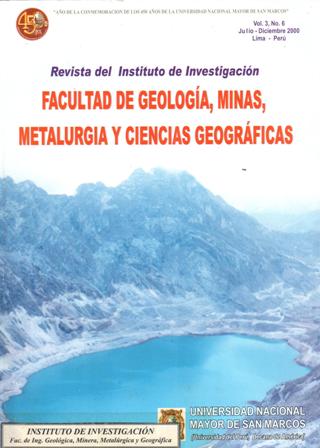Phosphorus removal from molybdenite concentrates via leaching
DOI:
https://doi.org/10.15381/iigeo.v3i06.2545Keywords:
Phosphorus concentrate, molybdenite, leachingAbstract
In the process of copper -molybdenum separation is sometimes used reactive phosphorus pentasulfide P2S5 as copper depressant , which causes pollution problems in the final match molybdenite concentrates . The further processing that is performed to these concentrates to produce molybdenum trioxide , produces an increase in the concentration of this element in the final product of 0.05% by hampering commercialization. Due to the above, a study was conducted to hydrometallurgical laboratory scale aimed at finding the optimum conditions of the present process to remove phosphorus so that the content in the molybdenite concentrate is less than 0.04% . The study contemplated a sulfuric acid leaching environment, under different experimental conditions , which were able to remove about 51 % of the phosphorus present in the molybdenite concentrate , lowering the phosphorus content less than 0.03 % values.
Downloads
Published
Issue
Section
License
Copyright (c) 2000 Patricio Navarro, Jaime Simpson, Cristian Vargas

This work is licensed under a Creative Commons Attribution-NonCommercial-ShareAlike 4.0 International License.
AUTHORS RETAIN THEIR RIGHTS:
a. Authors retain their trade mark rights and patent, and also on any process or procedure described in the article.
b. Authors retain their right to share, copy, distribute, perform and publicly communicate their article (eg, to place their article in an institutional repository or publish it in a book), with an acknowledgment of its initial publication in the Rev. Inst. investig. Fac. minas metal cienc. geogr.
c. Authors retain theirs right to make a subsequent publication of their work, to use the article or any part thereof (eg a compilation of his papers, lecture notes, thesis, or a book), always indicating the source of publication (the originator of the work, journal, volume, number and date).






